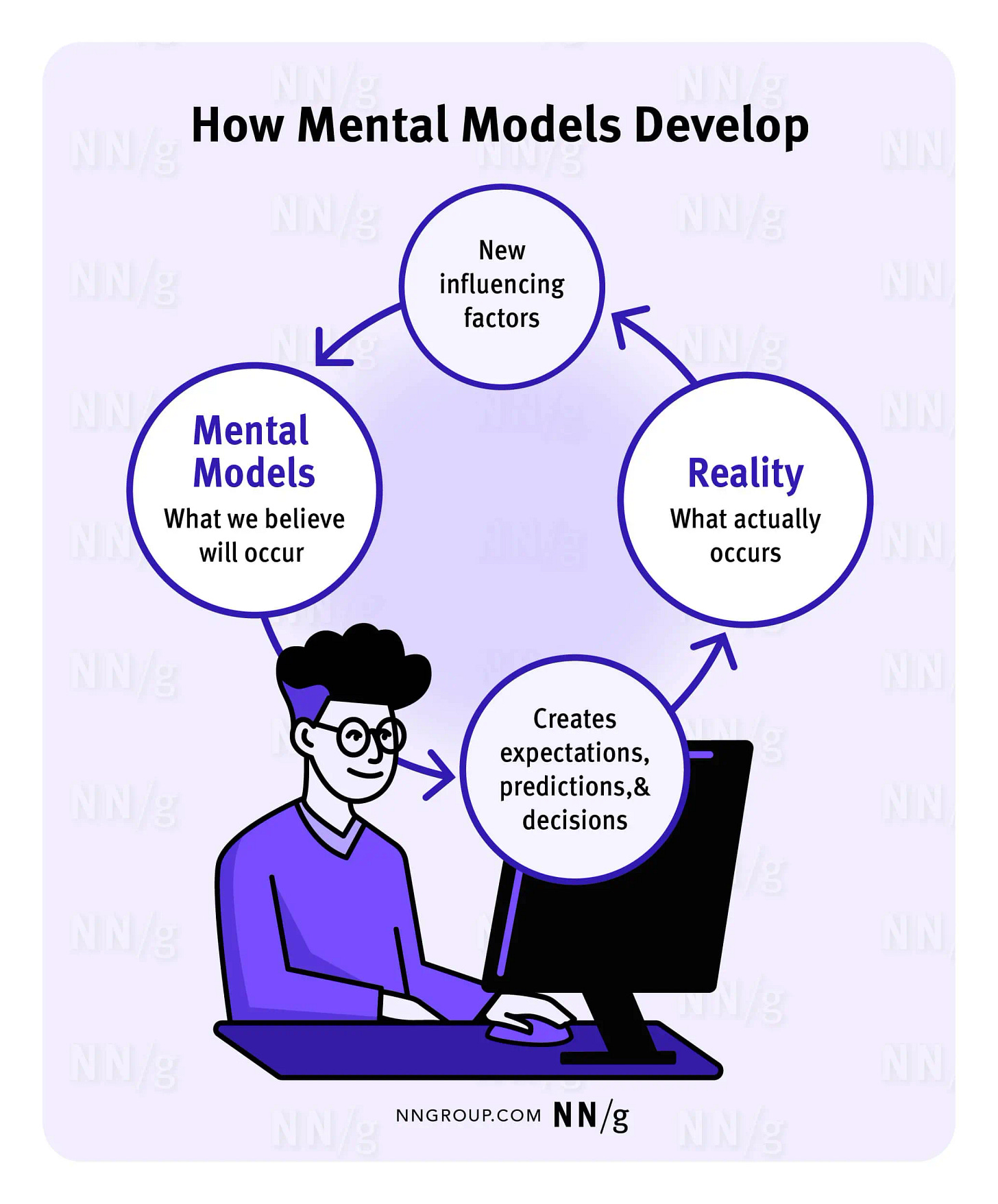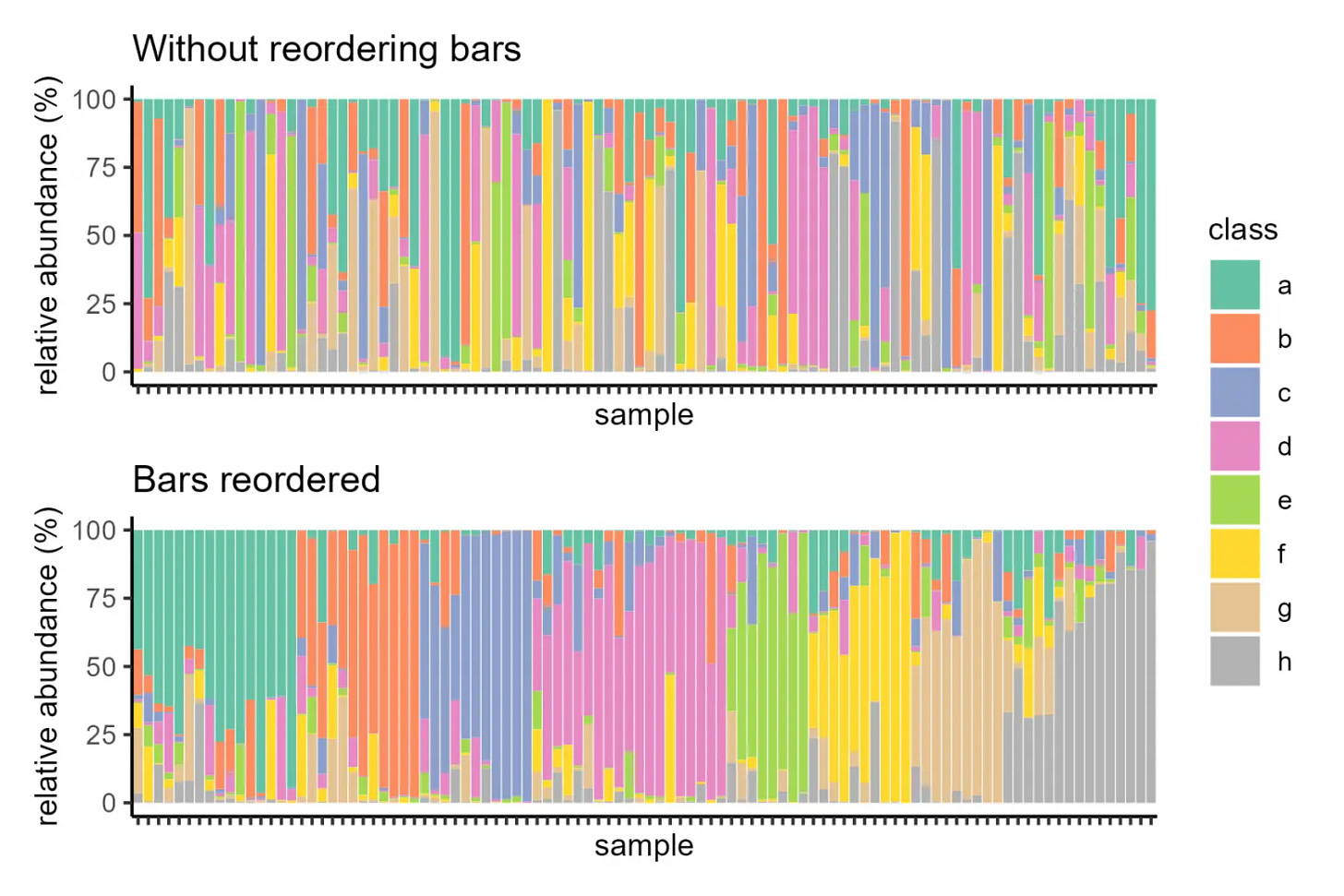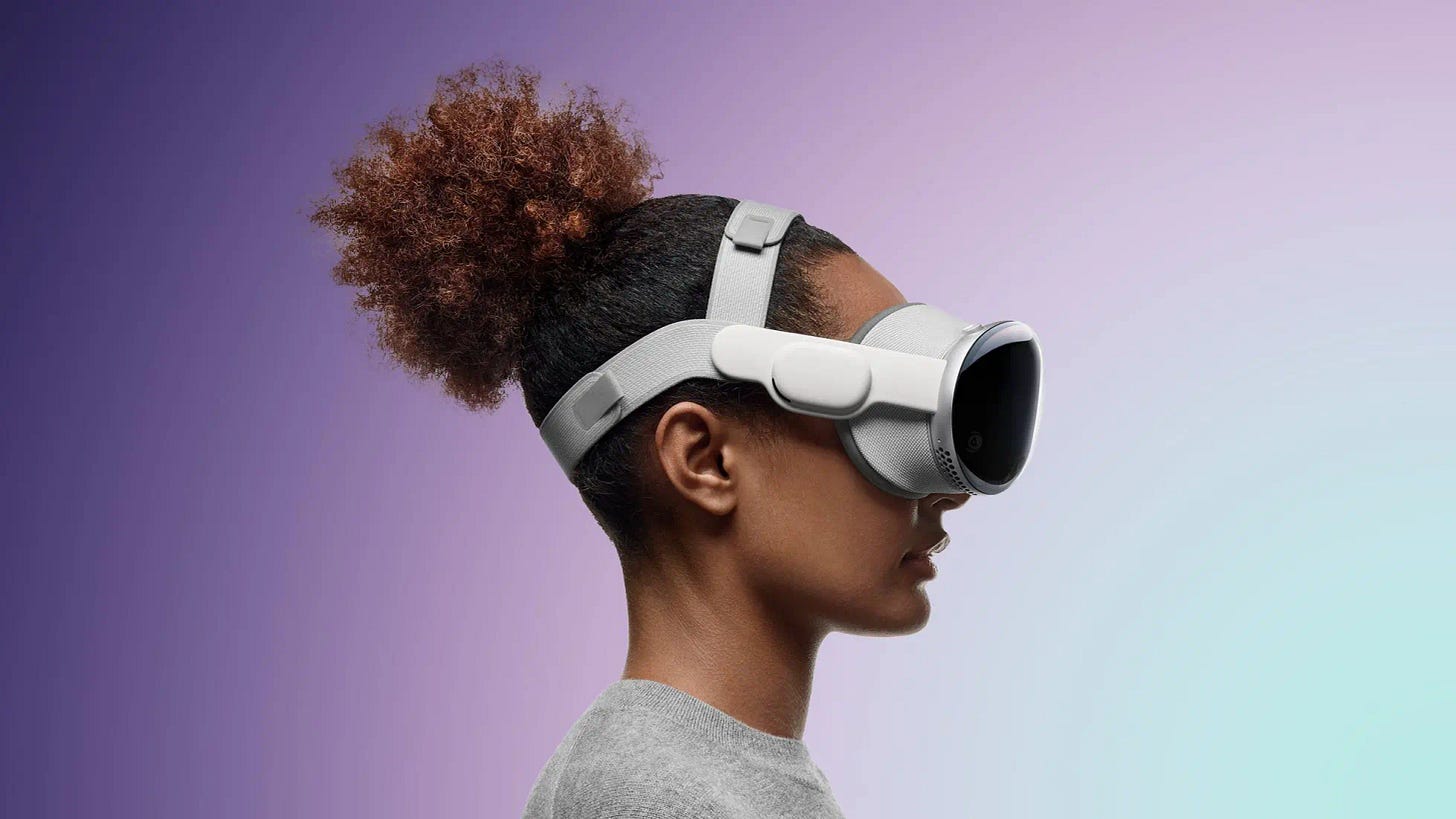Issue 86
Mental thick pickles in motion
Hello, dear readers! 👋
In this issue, among other things:
The first reviews of Apple Vision Pro
What is a mental model in the context of interface design?
The future of AI tools development according to experts
Good and bad practices in data visualization
Tips and principles for structured naming of design tokens
A collection of 30 philosophical principles of life
How to choose a prototyping tool
…and much more!
Enjoy reading!
🗞 News and articles
Mental Models and User Experience Design
Jacob Nielsen and Megan Chan from NNGroup wrote about what a mental model is in the context of interface design, and also analyzed some of the most popular examples of models.
The mental model is what the user thinks about the system. It helps the user predict how the system will work and influences how they will interact with it. The task of designers is to design the interface in such a way that the user can form an accurate model. One of the most common examples of a mental model is the metaphor of a shopping cart in online stores.
How Figma, Midjourney, Databricks, and Modyfi Harness AI with Design
A great article about the future development of AI tools, especially those related to design. The authors spoke with experts from Figma, Midjourney, Databricks and Modyfi and gathered several key findings.
Thoughts from the article:
AI will lower the threshold for entry into design and at the same time raise the bar for the quality of projects by increasing the efficiency of designers
AI will automate the routine creation of components, which will help designers focus on more global goals.
Designers will help make AI understandable and user-friendly for any user
In the future, AI may appear for UI and UX design, which can be trained for themselves on their own design system
Interaction with AI via chat will not become a thing of the past, but on the contrary, it will only develop. Today, this is one of the most effective ways to communicate with AI
Developers and designers will work harder to ensure that users learn how to work with AI faster, as well as understand what they want to create
AI tools will be more focused on teamwork
Developers should explicitly report limitations or inaccuracies in the AI. There will be more recommendations and safety principles for this.
Friends Don't Let Friends Make Bad Graphs
A useful practical article on good and bad practices in data visualization with examples and explanations.
Some tips:
Do not use bidirectional color scales for unidirectional data. The darkest and lightest colors should have special meanings. For example: maximum, minimum, average or zero
Avoid noisy bar graphs. In the case of multifactorial experiments, separate and group columns by factors
When creating heat maps, change the order of columns and rows so that it is easier to read the data. For example, using clustering
When creating heat maps, check for outliers (very different values) that may affect the perception of the data
Don't make network graphs without trying different structures. They can significantly change the appearance of networks, complicating or simplifying their interpretation
Do not create pie charts unnecessarily. People are much worse at reading angles than lengths
Do not use red, green, or rainbow color scales. People with deuteranopia, the most common type of color blindness, will not be able to make out such graphs.
⚡️ Briefly
Naming design tokens: the art of clarity and consistency. Zara Soltani shared tips and basic principles on the system naming of design tokens.
New technologies
Apple has started shipping Vision Pro headsets and has already sold 200,000 units. The first reviews also appeared.
Some details, cons and pros:
So far, few native apps are available, and iPad apps work with errors.
There are difficulties in working with a virtual keyboard
Avatars on video calls look scary and look like dead people. People are also scared of the eyes on the external display
The battery charge is very low, which means you have to charge the device every 2-3 hours
Transparency mode can be soapy
The headset weighs 650 grams
The price turned out to be very high, even by US standards
Appfigures has published an updated list of applications whose creators plan to release versions for visions. Most of the apps on the list are adapted versions from iOS and iPad OS, but there are also native ones.
Adobe is migrating its Lightroom and Firefly generative AI to visionOS.
Keep reading with a 7-day free trial
Subscribe to bezier.design to keep reading this post and get 7 days of free access to the full post archives.









